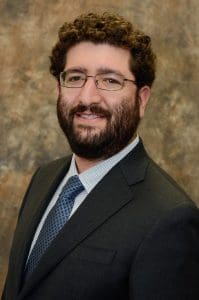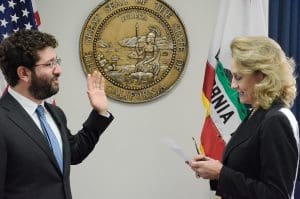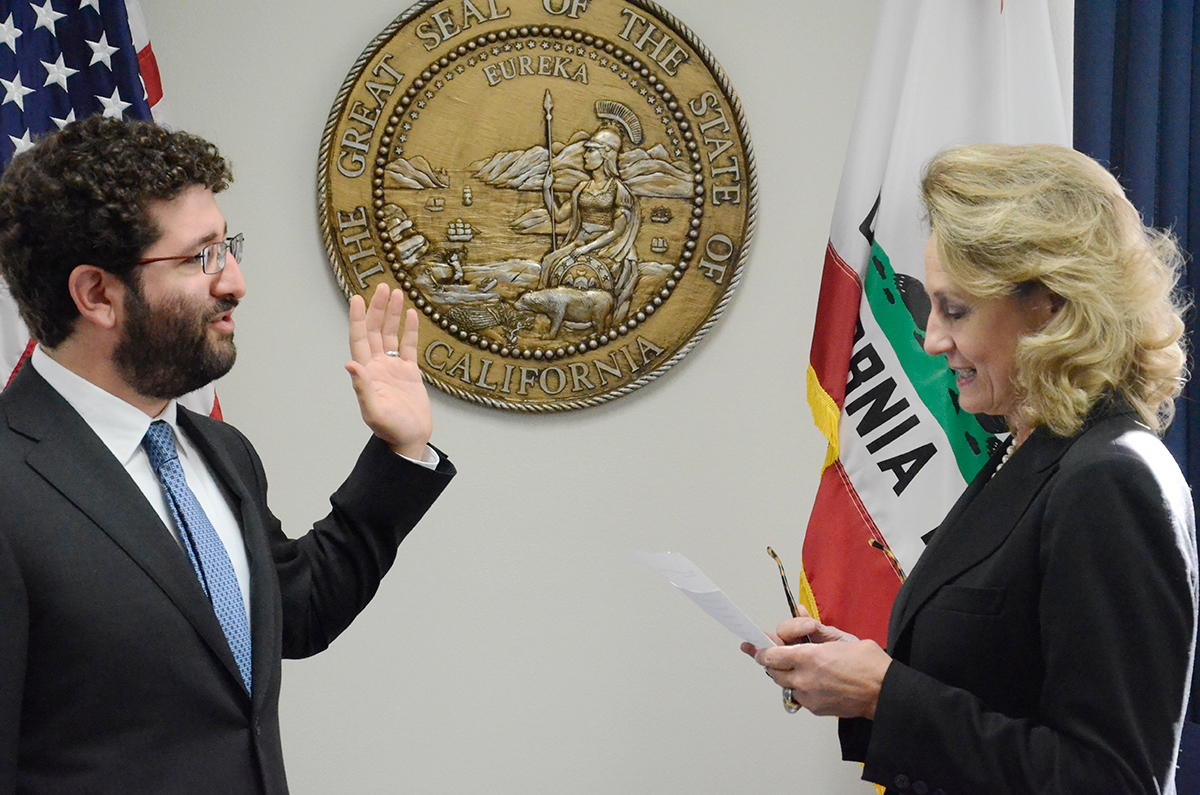Governor Brown appoints Matt Henigan California’s Deputy Secretary for Sustainability

When Matt Henigan (C10) was a freshman at Pitzer College, a professor asked him the question that would end up shaping his academic and professional life.
“What is the question you’re in school to answer?”
As a child, Matt was the kid with the lemonade stand raising funds to save the rainforest, so as a college student, the answer sprang to mind immediately
“Why is the environment so screwed up and what do we need to do to fix it?” Matt recalls. “That clarity and direction allowed me to choose classes, build a major, and set me on a course.”
It’s a course that has now led Matt to an appointment by California Governor Jerry Brown in August 2014 as Deputy Secretary for Sustainability at the California Government Operations Agency.
Matt’s job is to coordinate the projects that fulfill Gov. Brown’s Executive Order B-18-12, a directive issued in 2012 spelling out sustainability benchmarks for all departments under the “Gov Ops” umbrella (including the Department of Technology, Department of General Services, and Department of Human Resources, among others).
“The Executive Order is like a wish list,” Matt explains. “If Presidio students had sat around and come up with sustainability goals for the state, this would be it.”

In other words, Matt works to “green” the state of California’s facilities, fleet, and processes. On any given day, he might be studying financing mechanisms (such as power purchase agreements) for solar and wind power, laying the groundwork for electric vehicles and charging stations, figuring out how to attain LEED certification for state buildings, or finding ways to improve energy efficiency and boost the use of renewable energy.
Thus far, one of his key accomplishments is pushing through a requirement that all new buildings and major renovations participate in the statewide Savings by Design program, which provides rebates and technical assistance for projects that are more energy-efficient than code dictates.
Clearly, Matt’s previous positions at Sustainable Works—a Santa Monica-based nonprofit that partners with businesses to make their practices more sustainable—have provided invaluable experience in implementing these initiatives. But it was the Presidio Graduate School MBA program that taught Matt how to persuade decision-makers in the state bureaucracy.
“I was the biggest eye-roller when it came to ‘soft skills’—I thought they were such a waste of time,” says Matt, remembering his PGS management classes on teamwork and leadership. “But, coming out of school, that’s what I’ve used the most! How do you get a team moving in the right direction—especially when you have no specific authority over anyone? You use the art of persuasion and consensus-building. The things that we worked on in those soft skills classes have been absolutely essential.”
In fact, a big part of Matt’s job entails getting directors and deputy directors across the various departments to take a slight pause from their many important responsibilities and consider how they can go green. Not surprisingly for Presidians, Matt will usually get their attention by offering “win-win” advantages.
“They might not be worried about the energy bills—or even particularly their carbon footprint—but maybe they’ve got a maintenance backlog,” he explains. “So you say, ‘Well, these brand-new lights last forever, and your maintenance guys will be able to do something else with their time.’ And they’ll say, ‘Great, sign me up!’”
What Matt does—in the oft-repeated mantra of PGS—is “present the business case.”
“For two years, Presidio trains you how to make the business case for sustainability, and now that’s basically what I do every day,” he says.
On an even larger scale, the state of California—by demonstrating the feasibility of sustainable practices—makes a compelling case for corporations and industries to follow suit.
“When the private sector sees that the state is jumping in and doing it in their own operations, they know that the technology has been vetted; it’s not some off-the-wall idea,” Matt explains. “If the very deliberative state government installed this type of technology, or is using these building techniques or these financing mechanisms, you can be sure that it’s been well-examined and that it’s not some fly-by-night, flash-in-the-pan type of thing.”
This “walk the walk” modeling approach grabbed headlines nationally, when President Obama signed an executive order directing federal agencies to slash greenhouse gas emissions by 40% compared to 2008 levels and to increase energy use from renewable sources by 30%.
“That’s right up my alley; that’s exactly what I’m working on,” Matt laughs. “My wife says we’re not moving to D.C., though.”
Good thing. We need Matt—and his lifelong dedication to finding answers to seemingly intractable environmental questions—right here in California.

